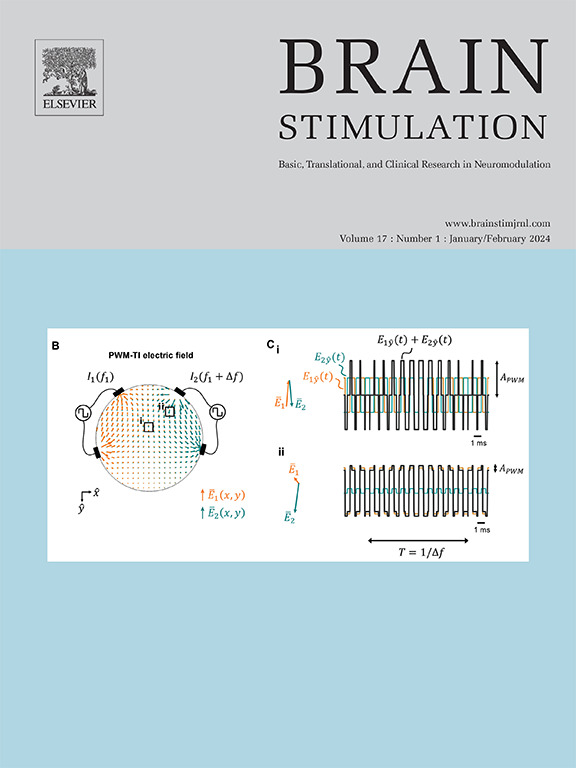脑深部刺激治疗酒精使用障碍和酒精性肝病的成本-效果分析。
IF 7.6
1区 医学
Q1 CLINICAL NEUROLOGY
引用次数: 0
摘要
背景:酒精使用障碍(AUD)是一个主要的公共卫生问题,也是导致死亡率和发病率的原因。酒精相关性肝病(ALD)是AUD的一种衰弱性并发症,可通过戒酒来缓解。深部脑刺激(DBS)正在成为一种潜在的治疗AUD的方法。然而,与标准医疗相比,其成本效益尚不清楚。目的:评估与医疗管理相比,DBS对AUD和ALD患者的成本-效果。方法:我们利用基于已发表文献的决策分析模型,对AUD和ALD患者的DBS和医疗管理的成本和健康结果进行成本-效果分析。我们还进行了阈值分析,以确定DBS具有成本效益所需的成功概率。成本以2024美元计算,有效性以质量调整生命年(QALYs)计算。我们使用了1-2年的时间范围,并采用了社会视角。结果:我们的研究结果表明,对于一般的AUD患者,DBS在任何DBS成功率下都不具有成本效益。然而,对于晚期ALD患者,将纤维化定义为3期或超过DBS变得具有成本效益。对于这些患者来说,在为期两年的时间里,DBS具有成本效益,10万美元的支付意愿门槛,DBS成功率大于53%。对于晚期失代偿性ALD患者,DBS在一年的时间内具有成本效益,DBS成功率大于35%。结论:如果DBS是有效的,那么DBS对于AUD和ALD患者可能是划算的。因此,未来的随机对照试验评估其有效性是必要的。本文章由计算机程序翻译,如有差异,请以英文原文为准。
Cost-effectiveness analysis of deep brain stimulation for the treatment of alcohol use disorder and alcoholic liver disease
Background
Alcohol use disorder (AUD) is a major public health concern and cause of mortality and morbidity. Alcohol-associated liver disease (ALD) is a debilitating complication of AUD, mitigated by abstinence from alcohol use. Deep brain stimulation (DBS) is emerging as a potential treatment for AUD. However, its cost-effectiveness compared to the standard medical treatment is unclear.
Objective
To estimate the cost-effectiveness of DBS compared to medical management for patients with AUD and ALD.
Methods
We utilized a decision analytic model based on published literature to conduct a cost-effectiveness analysis of costs and health outcomes for DBS and medical management in patients with AUD and ALD. We also carried out a threshold analysis to determine the probability of success necessary for DBS to be cost-effective. Costs were measured in 2024 US dollars and effectiveness in quality-adjusted life years (QALYs). We used a time horizon of 1–2 years and adopted a societal perspective.
Results
Our results show that for AUD patients in general, DBS is not cost-effective at any DBS success rate. However, for advanced ALD patients, defined as fibrosis stage 3 or beyond DBS becomes cost-effective. For these patients, DBS is cost-effective over a two-year period at a $100,000 willingness-to-pay threshold at DBS success rates greater than 53 %. For advanced decompensated ALD patients, DBS is cost-effective over a one-year period at DBS success rate greater than 35 %.
Conclusion
Should it prove efficacious, DBS may be cost-effective for patients with AUD and ALD. Thus, future randomized controlled trials to evaluate its efficacy are warranted.
求助全文
通过发布文献求助,成功后即可免费获取论文全文。
去求助
来源期刊

Brain Stimulation
医学-临床神经学
CiteScore
13.10
自引率
9.10%
发文量
256
审稿时长
72 days
期刊介绍:
Brain Stimulation publishes on the entire field of brain stimulation, including noninvasive and invasive techniques and technologies that alter brain function through the use of electrical, magnetic, radiowave, or focally targeted pharmacologic stimulation.
Brain Stimulation aims to be the premier journal for publication of original research in the field of neuromodulation. The journal includes: a) Original articles; b) Short Communications; c) Invited and original reviews; d) Technology and methodological perspectives (reviews of new devices, description of new methods, etc.); and e) Letters to the Editor. Special issues of the journal will be considered based on scientific merit.
 求助内容:
求助内容: 应助结果提醒方式:
应助结果提醒方式:


